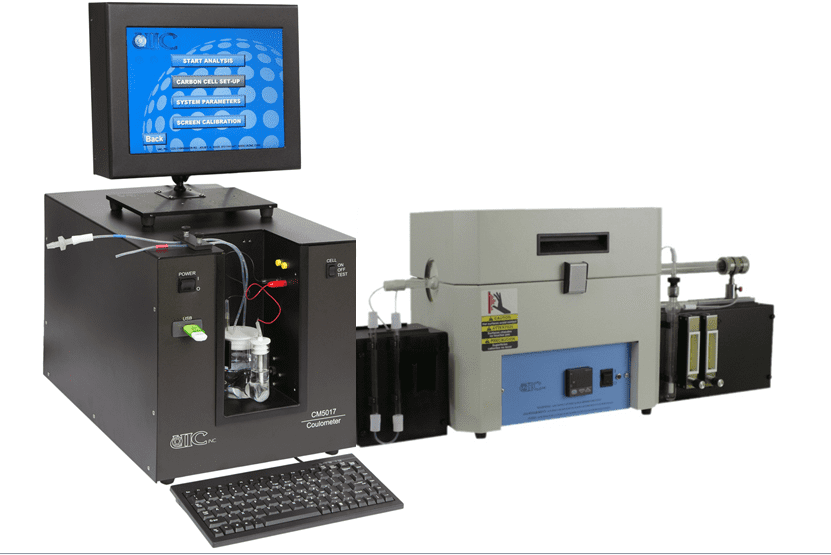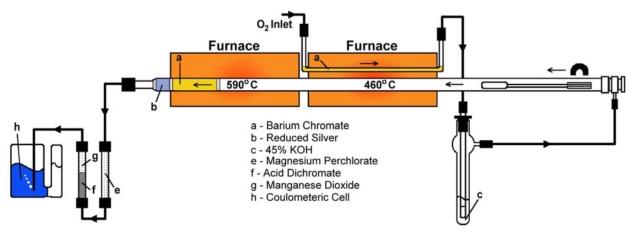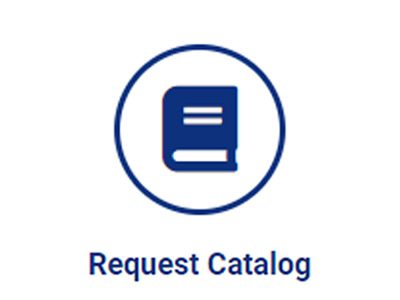CM120 Total Carbon Analysis By Combustion And Coulometric Detection
The CM120 Total Carbon Analyzer is a complete analytical system capable of measuring total carbon in a wide variety of sample types and matrices. Combining a high-temperature combustion furnace with a highly sensitive CO2 detector, the CM120 is capable of analyzing samples containing total carbon concentrations from ppm levels to 100% without user calibration. UIC’s analyzers are rugged, accurate and adaptable to most TC applications. They are used extensively in industrial, research and educational laboratories worldwide. The CM120 system includes the following components pictured above:
CM5017 CO2 Coulometer
| CM5300 Horizontal Furnace with CM5322 Furnace Kit
|
Instrument Capabilities
A major advantage of the CM120 Total Carbon Analyzer is the use of coulometric detection. Employing the principles of Faraday’s Law, the CM5017 CO2 Coulometer automatically measures the absolute mass amount of carbon dioxide resulting from sample combustion. No user-calibration is required and linear detection is available from less than 1 µg carbon to over 10,000 µg carbon. Using this 100% efficient coulometric process, relative standard deviations of 0.2% or better are common for standard material. For smaller concentrations, an absolute deviation of approximately 1 µg C is typical.
Additionally, it is possible to analyze liquids containing particulates, solids or solid/liquid slurries. Oxidation times vary with sample type and temperature although 5 to 7 minute analyses are typical.
Total Carbon
The sample is initially weighed into a platinum or porcelain “boat”. The boat is then placed into a quartz ladle which is introduced into the high temperature oxygen atmosphere (typically 950OC) within the sample combustion zone. In that environment, all carbon within the sample is rapidly oxidized to CO2. Interfering reaction products (including sulfur oxides, halides, water and nitrous oxides) are removed by the post-combustion scrubbers. The resulting carbon dioxide is then swept into the CM5017 CO2 Coulometer where it is automatically measured using absolute coulometric titration.
Data Handling
Names, weights and sizes of up to 50 samples can be entered, to be used by the CM5017 in calculating the final result. Analytical progress is displayed on the 10” LCD touch screen in user-selectable units. Detailed analysis information is automatically saved to an on-board SD card after each sample. Data can also be transmitted through the standard serial and Ethernet ports to be captured on a personal computer or LIMS. In addition, a detailed report can be printed to the optional small format printer while each sample is running.
Ordering Information
CM120 – Total Carbon / Total Organic Carbon in Solids
Includes: CM5017 CO2 Coulometer, CM5300 Horizontal Furnace, and CM5322 Furnace Kit with tools and accessories for the analysis of solid samples. Must also choose either Sample Introduction Kit CM5323 (small volume) or CM5324 (large volume) to be included with system. (P/N CM120-01 110V, 50/60Hz) (P/N CM120-02 220V, 50/60Hz)
Optional Equipment:
Printer – 3” format impact printer. Includes cable, power supply, paper and ribbon. (P/N CM124078)
CM5390 Automated Boat Inlet – Automates the sample purge and introduction/withdrawal cycles of the sample combustion process. See the CM5390 specification sheet for more details.
.






